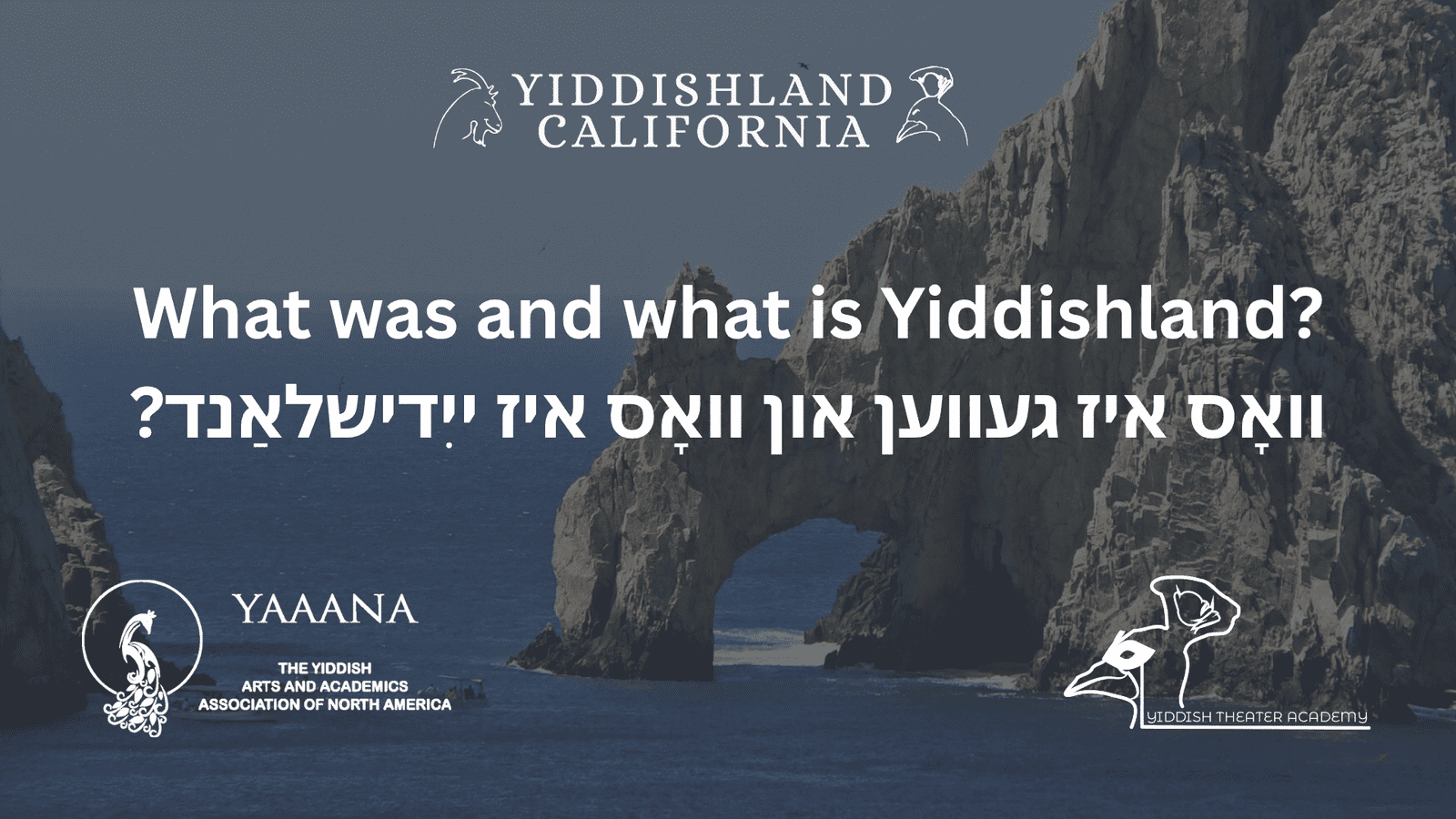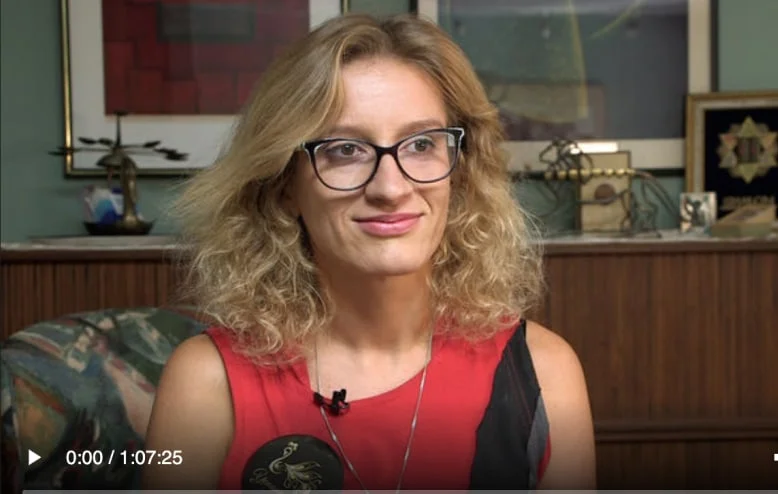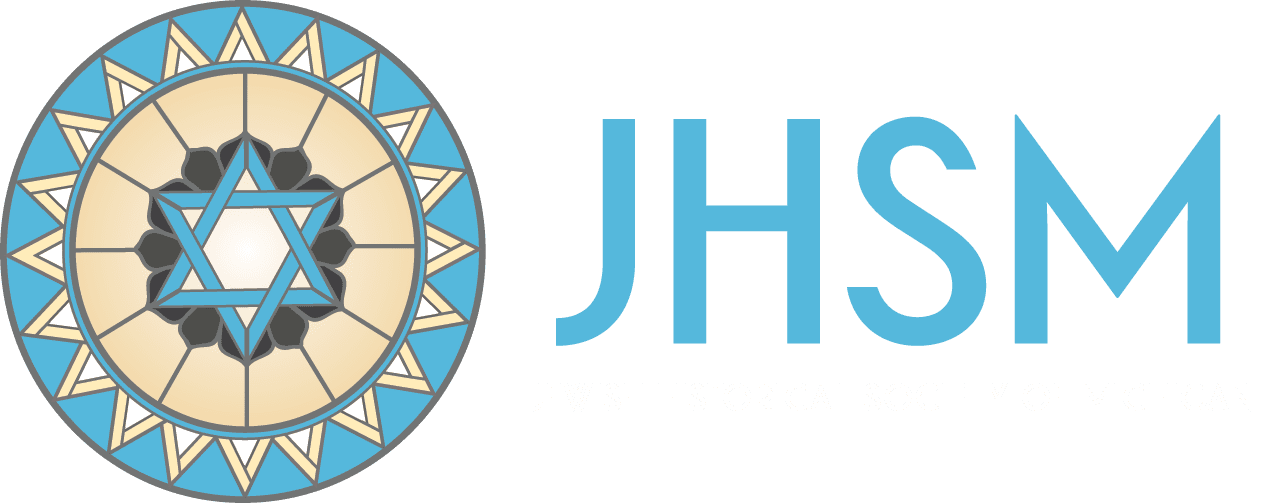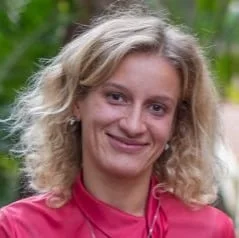Traveling Talks
ייִדישלאַנד אַרום דער װעלטJourney Through Yiddish Culture—See Where We're Going Next!

We would love to hear from you! If you are interested, feel free to fill out this form and we will contact you.
Yiddish language and culture are seemingly unquenchable springs of inspiration for the analytical and the creative mind. Contemporary artists are able to draw from these multifaceted texts, images and memories to create meaningful art today. Jana Mazurkiewicz Meisarosh – the founder of the Yiddish Arts and Academics Association of North America (YAAANA) – will take you through a brief history of Yiddish, Yiddishland, and the imperative of its legacy for imagining a sustainable creative community.

Presenter: Jana Mazurkiewicz Meisarosh
Jana Mazurkiewicz Meisarosh The founder of the Yiddish Arts and Academics Association of North America (YAAANA) – will take you through a brief history of Yiddish, Yiddishland, and the imperative of its legacy for imagining a sustainable creative community.
“Puedes sacar a un judío de un shtetl pero no puedes sacar un
“You can take a Jew out of a shtetl but you can’t take a shtetl out of a Jew.”
“You can take a Jew out of a shtetl but you can’t take a shtetl out of a Jew.”
” On Sunday, April 6th, the Marbella Jewish Community hosted a unique lecture on Yiddish language and culture, given by Jana Mazurkiewicz. Jana is the founder and director of the non- profit organization Yiddish Arts and Academics Association of North America (YAAANA).
The lecture “What was and what is Yiddishland” included slides and music and dispelled the myth that Yiddish is a dead language, showing a captive audience that it is in fact very much alive.
In an overview of the language’s 1,000 year history, the audience was taken to its origins in the Alsace region of France and through the publication of the first Yiddish book Bovo-Buch by Elia Levita Bachur. Then, Jana explained how in 1908 Yiddish was voted “a national language of the Jewish people” at the Czernowitz Conference, elevating its status and leading eventually to Yiddishism, a cultural and linguistic effort which strives to preserve this language and the rich cultural heritage that surrounds it. (…)
Jana concluded her very informative lecture with a famous Yiddish song, “Bulbes” (poor people’s potatoes), inviting all those present to join in and experience the joy that is this truly expressive language.”
“Puedes sacar a un judío de un shtetl pero no puedes sacar un shtetl de un judío.”
El domingo seis de abril, la Comunidad judía de Marbella acogió una conferencia única sobre el Yiddish, impartida por Jana Mazurkiewicz, fundadora de YAAANA, la organización sin ánimo de lucro, Yiddish Arts and Academics Association de América del norte.
La conferencia, que incluyó diapositivas y música, desmintió el mito de que el yiddish es una lengua muerta, mostrando a un público cautivado que, de hecho, es una lengua más que viva.
Desde sus orígenes en la región francesa de Alsacia hasta la publicación del primer libro en Yiddish Bovo-Buch de Elia Levita Bachur, Jana explicó que en 1.908 el Yiddish fue elegido “idioma nacional del pueblo judío” en la Conferencia de Czernowitz, lo que elevó su estatus y condujo finalmente al Yiddishism, un esfuerzo cultural y lingüístico que busca preservar esta lengua y el rico patrimonio cultural que la rodea.
Se espera que Yiddishland, el museo itinerante de YAAANA, se establezca en la Costa del Sol en un futuro no muy lejano, para ofrecer eventos educativos y artísticos para todas las edades, difundiendo la alegría del Yiddishkeit a través de clases, obras de arte, y obras de teatro. Su objetivo principal es recrear el ambiente de los shtetl, los pequeños pueblos con oficios que abundaban en la Europa del este antes del Holocausto.
Jana concluyó su instructiva charla con una famosa canción Yiddish titulada “Bubas” (patatas de la gente pobre) invitando a todos los presentes a unirsey experimentar la emoción que ofrece este idioma tan expresivo.
SOME OF OUR PAST TALKS
Please see our Events Calendar and Past Events
Location:
Temple Beth Shalom,
Santa Fe,
New Mexico
Date & Time:
April 25 2025
05:00 PM
Location:
Temple Beth Shalom of East Valley,
Phoenix,
Arizona
Date & Time:
April 27 2025
07:00 PM
Location:
Desert Foothills Library,
Phoenix,
Arizona
Date & Time:
April 28 2025
11:00 AM
Location:
Tucson Jewish Museum & Holocaust Center,
Tucson,
Arizona
Date & Time:
April 29 2025
01:00 PM


What Was and What is Yiddishland?
?װאָס איז געװען און װאָס איז ייִדישלאַנד
Yiddish language and culture are seemingly unquenchable springs of inspiration for the analytical and the creative mind. Contemporary artists are able to draw from these multifaceted texts, images and memories to create meaningful art today. Jana Mazurkiewicz Meisarosh – founder of the Yiddish Arts and Academics Association of North America (YAAANA) – will take you through a brief history of Yiddish, Yiddishland, and the imperative of its legacy for imagining a sustainable creative community.

Jana Mazurkiewicz Meisarosh is a PhD candidate in the Slavic Department at the University of Michigan, Ann Arbor. She is working on her dissertation on Yiddish theater in Communist Warsaw. Originally from Poland, Jana holds a Master of Arts degree in Polish Philology and Jewish Studies from the University of Wrocław. Jana is not only a practicing academic, but also an active theater artist and critic. She is an actor, director, playwright, and producer of Yiddish theater. In October 2017, she moved to San Diego and launched the Yiddish Arts and Academics Association of North America (YAAANA).










